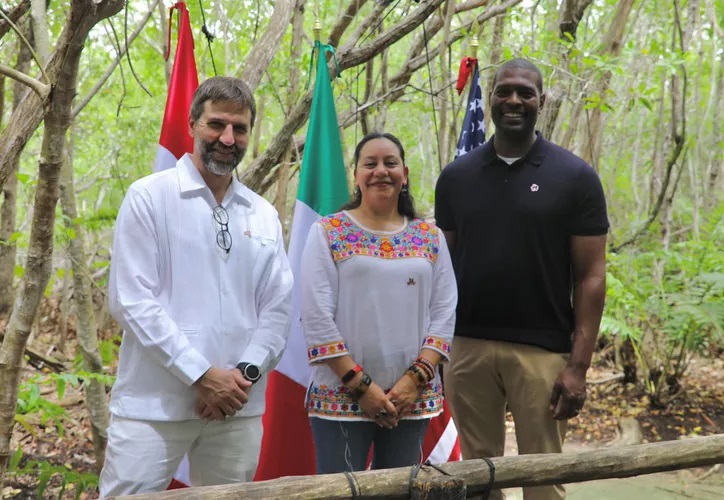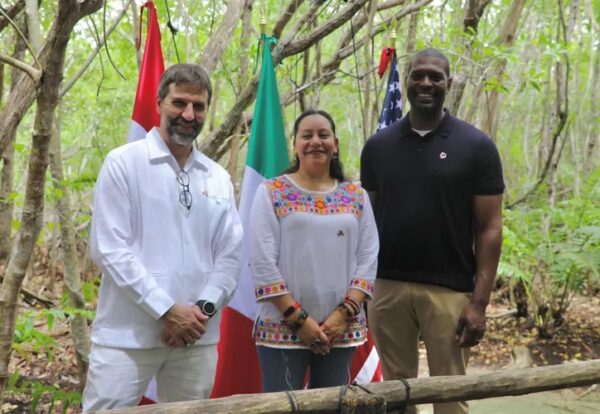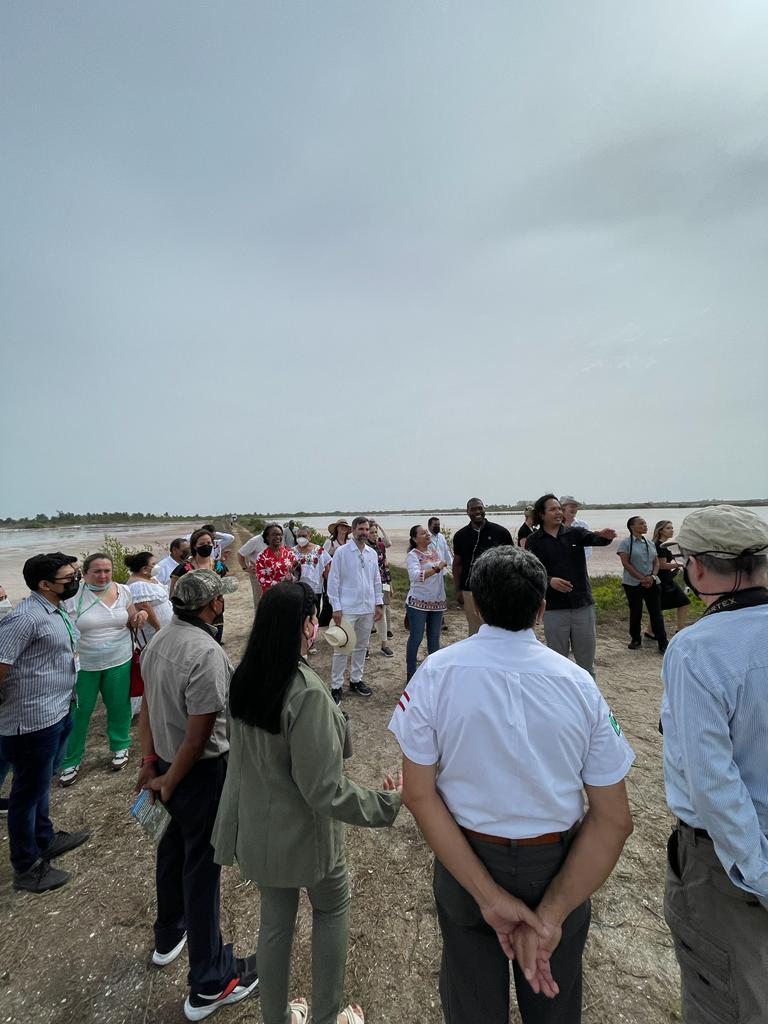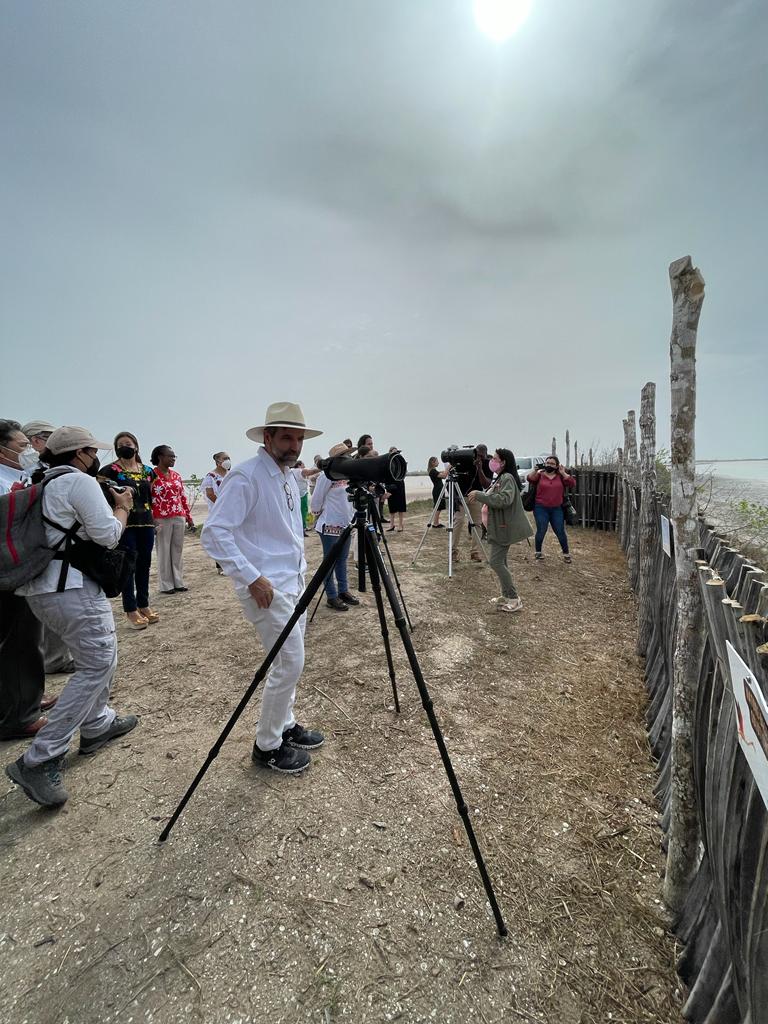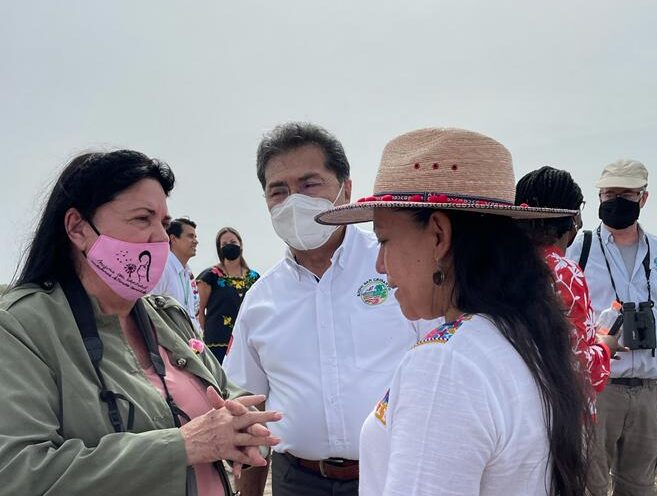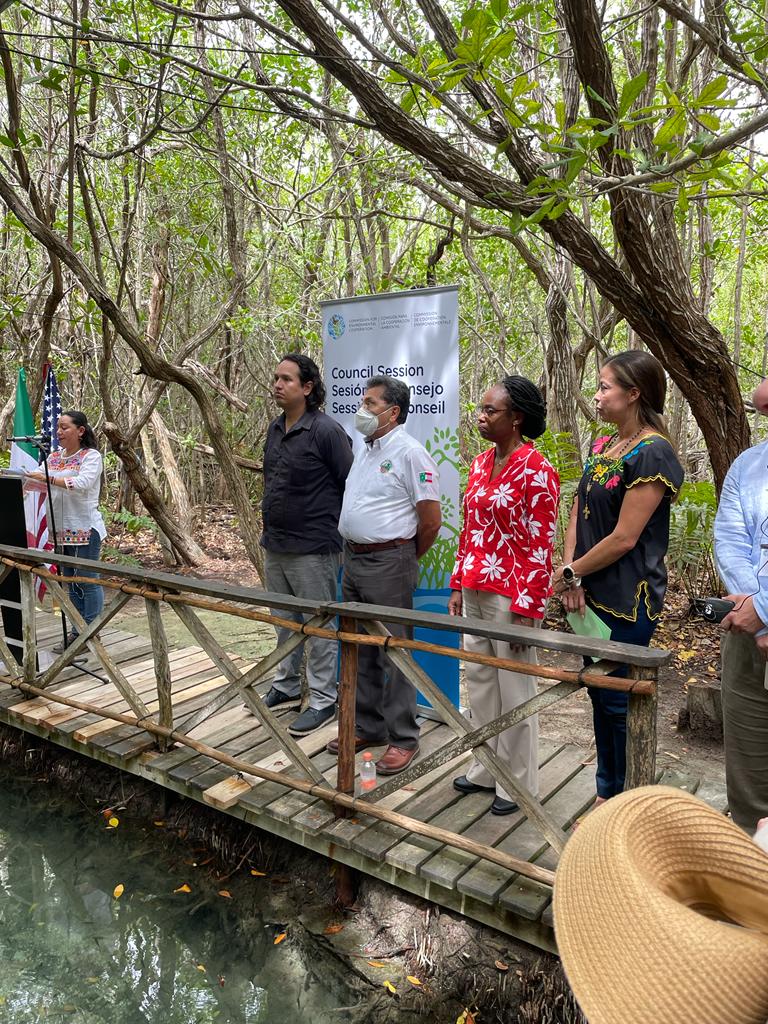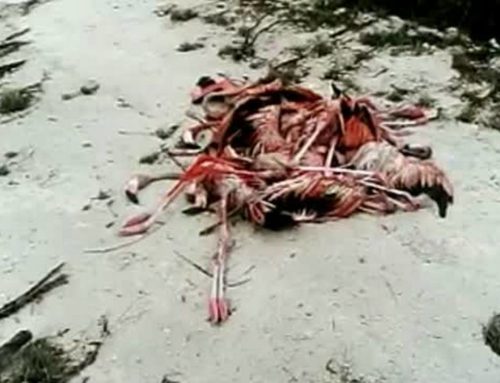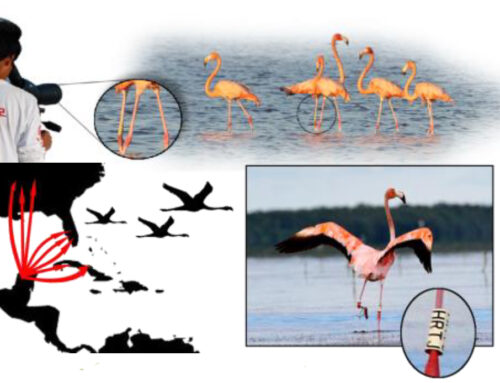The head of Mexico's Ministry of the Environment and Natural Resources (SEMARNAT), María Luisa Albores González, hosted her counterparts, the Minister of Environment and Climate Change Canada (ECCC), Steven Guilbeault, and the Administrator of the U.S. Environmental Protection Agency (EPA), Michael S. Regan.
Photograph by Selene Tamayo, taken from the newspaper Yucatan at hand
The 10th meeting of the parties to the Commission for Environmental Cooperation (CEC), an intergovernmental organization established in 1994 by Canada, the United States and Mexico under the North American Agreement on Environmental Cooperation (NAAEC) and parallel to the North American Free Trade Agreement (NAFTA) was held in Yucatan on July 14-15, 2022.
Mexico's Secretary of the Environment and Natural Resources (SEMARNAT), María Luisa Albores González, received her counterparts, Michael S. Regan, Administrator of the Environmental Protection Agency (EPA) of the United States, and Steven Guilbeault, Minister of Environment and Climate Change of Canada (ECCC). On July 14, the 29th Annual Session of the Joint Consultative Committee (JCCC) Council and Public Forum was inaugurated at Ejido de San Crisanto. The prestigious delegation of ministers, accompanied by other government officials from the Peninsula, visited the breeding colony of the Caribbean Flamingo (phoenicopterus ruber).
They were received by Mr. José Inés Loria Palma, president of Fundación San Crisanto AC; developer of Blue Carbon projects; executive secretary of Red Manglar México AC and operations director of Ejido San Crisanto.
The guests arranged themselves around the enclosure built as a hiding place for the custody and study of the flamingo colony and while observing the nests and chicks, aided by optical equipment for a closer approach, they received a lecture given by Dr. Xiomara Galvez, on the problems of conservation of the species in the Caribbean. The lecturer highlighted the relevance of the conservation program for this species in Mexico, which has been a leader in many studies and processes that have now been implemented in other countries to conserve the species.
Talk on the flamingo program given at the breeding site in Ejido San Crisanto, to the delegation of ministers of the Environment.
During her speech, Dr. Galvez also expressed that the joint and uninterrupted work of governmental institutions such as CONANP, SEMARNAT, SDS associated with civil society organizations such as Niños y Crias, the Pedro and Elena Hernandez Foundation, the San Crisanto Foundation and the Caribbean Coast Conservancy, each at different periods since the 1990s, have made possible the results that have been presented today.
José Inés Loria Palma and Dr. Xiomara Gálvez answer post-conference questions to the head of SEMARNAT, María Luisa Albores.
The conservation of the quality of coastal wetlands, supported by actions for their improvement such as those carried out by the Ejido San Crisanto, makes it possible for flamingos to find adequate sites to develop their annual life cycle and remain in Yucatan, for the enjoyment of all Mexicans.
In the afternoon, the 29th Annual Session of the Council and Public Forum of the Joint Consultative Committee (JCCC) was brought to a close by the head of Mexico.


